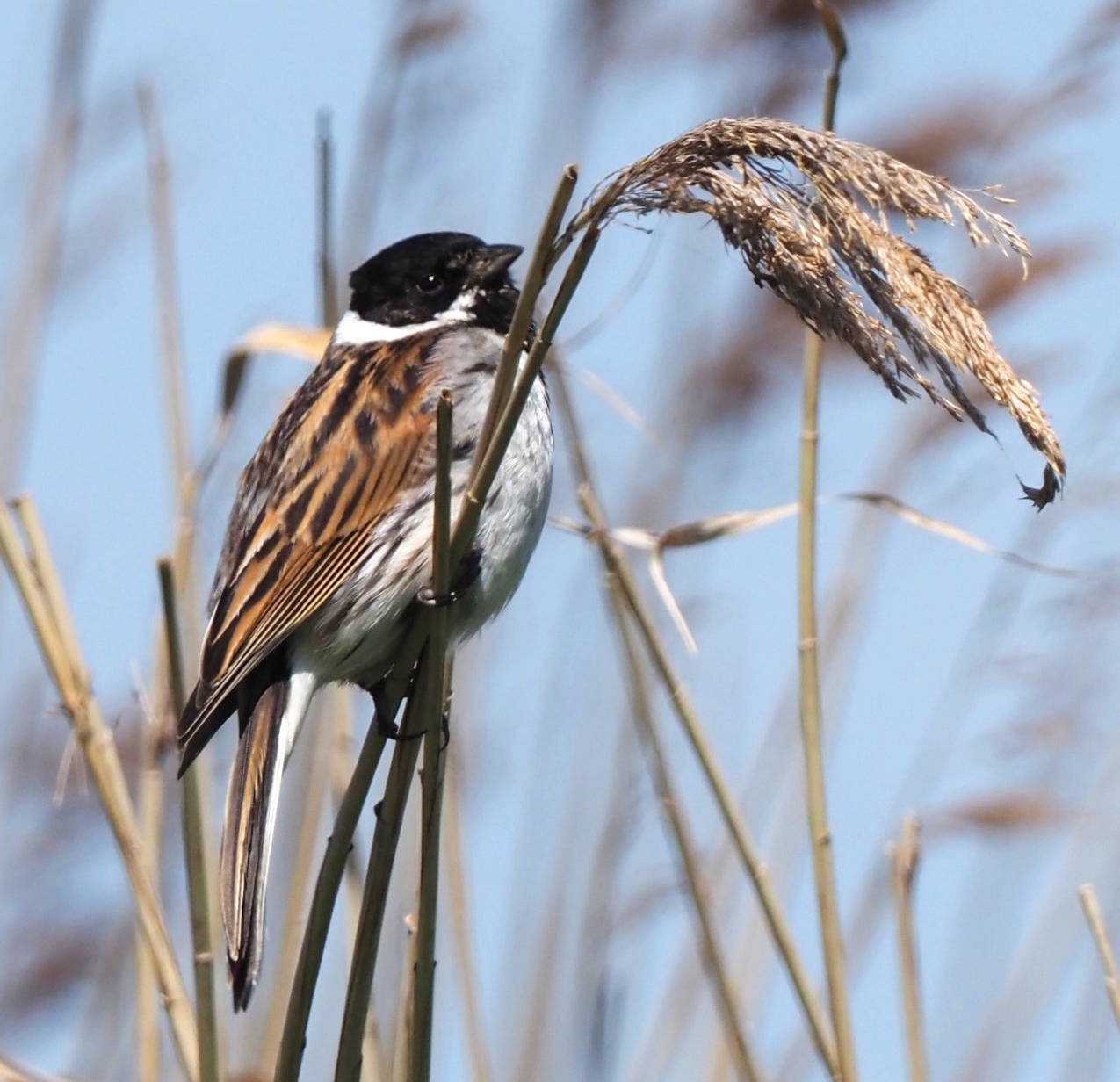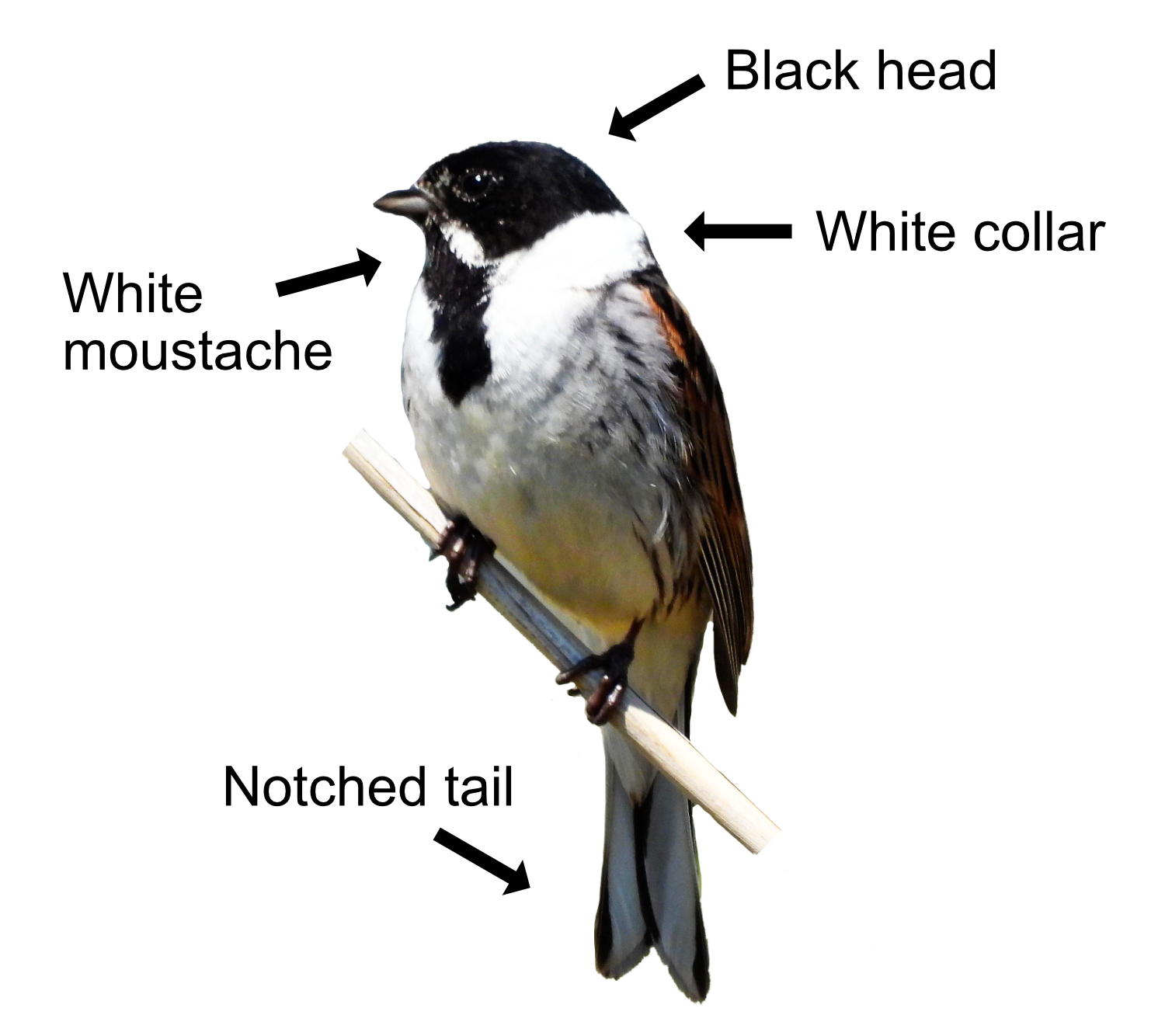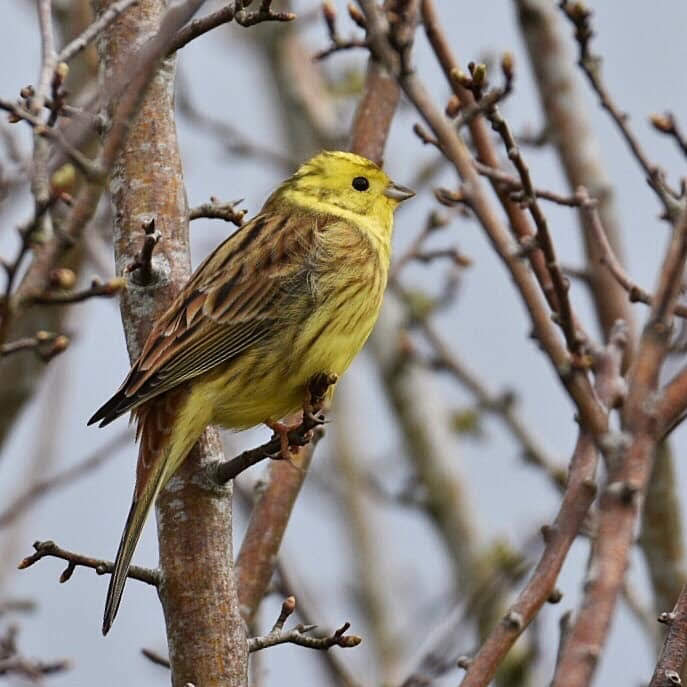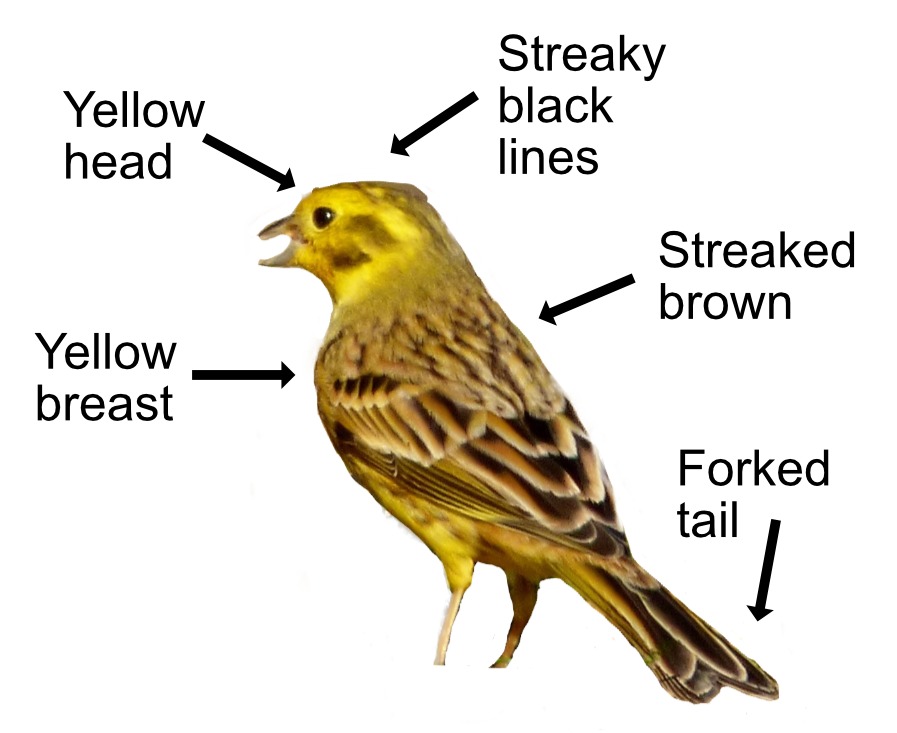
The Reed Bunting is one of the few wetland birds that didn't decline when reedbeds were drained. It simply moved to drier areas and nobody knows why. The male Reed Bunting is a dapper fellow with a jet-black head and white moustache, often singing his "zinc zinc zinc zonk" song from a prominent perch, like someone learning to count from one to four.
The Reed Bunting is sparrow-sized, but slimmer, with a long, deeply notched tail. The male has a black head, a white collar and his all-important drooping white moustache. Females, winter males and youngsters have streaked heads. In flight, the tail looks black with broad, white edges. They have stubby seed eater bills and dull wing bars.
Although Reed Buntings will eat insects, their chief food is seeds and they are often seen feasting on seed heads. Reed Buntings will also visit garden bird tables for seeds, especially in cold winters.

Nesting starts in April and finishes in late August. The nest is built amongst the ground vegetation by mum, usually near water, but it can also be on an arable field, especially oilseed rape. It is made from grass and moss and then lined with finer material. The 4-5 olive-grey eggs hatch after 13 days and both proud parents feed the young. If a predator comes near the nest, mum and dad will feign injury in an attempt to draw the predator away from where the nest is hidden. The youngsters can fly after a further 10 days which gives time to have 2 or 3 broods. Mum and dad do their moult between July and November once they have finished raising the kids. They do a second moult between March and May when dad gets his dapper black head.
Reed Buntings mostly stay put, but some move southwards or to lowland areas in autumn. A few from northern Europe arrive to overwinter here too. They form winter flocks with other finches and buntings. There are about 250,000 pairs in Britain and the population is stable.
Their Latin name is 'emberiza schoeniclus' where 'emberiza' is from the Old German 'embritz' for a bunting. The 'schoeniclus' is derived from the Ancient Greek 'skhoiniklos' for an unknown waterside bird. The 'emberizidae' bird family contains around 300 seed-eating species, the majority of which are found in the Americas. Our Reed Bunting is most closely related to the Japanese Reed Bunting and the Pallas's Reed Bunting. The English name is from where it is mainly found. Another name is the 'reed sparrow'.

